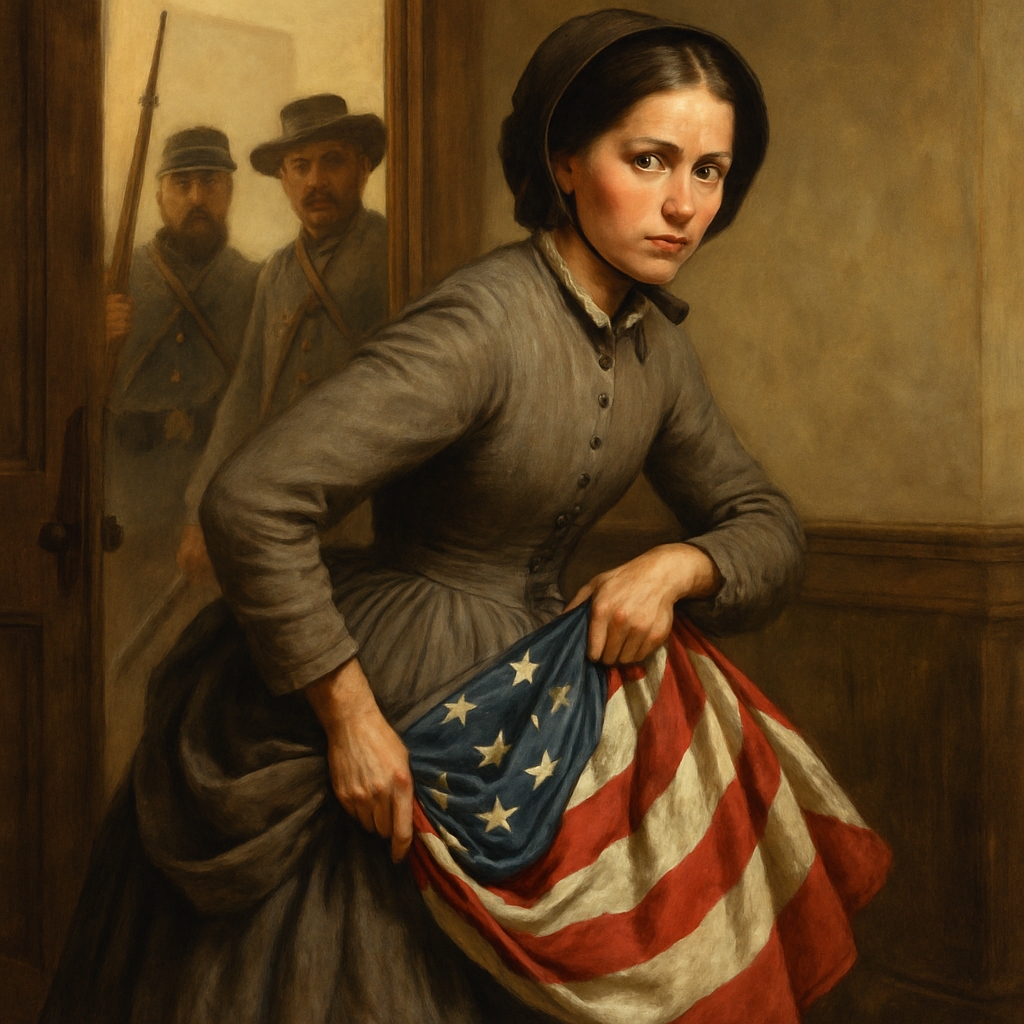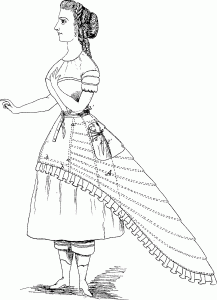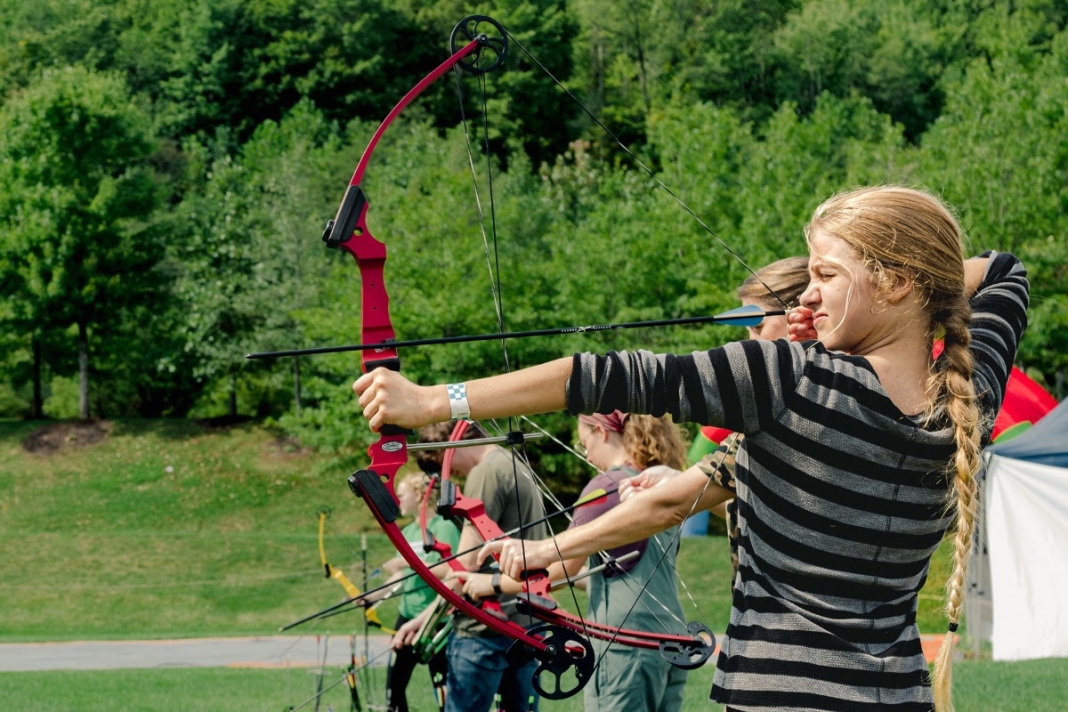MARTINSBURG, W.Va — The prosperous manufacturing town of Martinsburg in Berkeley County, West Virginia, was thrust into turmoil at the outset of the Civil War, and its citizens had to decide where their allegiance lay.
As the secession movement gathered steam in Virginia in the early months of 1861, most of the county's residents opposed the idea. Even after war broke out, Berkeley remained divided in its loyalties, and in the town of Martinsburg, support for the Union was especially strong.
Civil War loyalties in western Virginia

Allegiances in western Virginia at the outset of the conflict were shaped by a complex mix of heritage and economic interest. Historian John W. Shaffer, in a study of Barbour County, found that westerners whose families had been in Virginia for three or more generations were more likely to support secession and the Confederacy than those whose grandparents had been born elsewhere.
Economic interest, too, played a role. Towns and counties whose economies were heavily dependent upon slave labor were more likely to support the Confederacy, whereas places whose economies involved significant trade with free states were more likely to show strong support for remaining loyal to the Union.
Those factors were all present in Berkeley County. Thirteen percent of the county’s population was unfree, and in the countryside, many planters who had deep family roots in Virginia also had deep investments in slave labor. In contrast, rapidly growing Martinsburg contained many newcomers to Virginia, and the arrival of the Baltimore and Ohio Railroad in 1842 strengthened the town’s economic ties to regions that would remain in the Union.
Baltimore & Ohio Railroad’s impact on Martinsburg
The railroad also brought a wave of Irish immigrant laborers to the town, employed to build the line. Many of these Irish stayed in Martinsburg, forming a neighborhood that came to be known as Irish Hill. As they became citizens, they naturally tended to give their allegiance to the Union that granted them political rights and the opportunity to improve their lives.
Many of the products they produced traveled eastward or westward along the Baltimore and Ohio railroad to markets in the Union states. As a result, loyalty to the Union was stronger in Martinsburg than anywhere else in Berkeley County. But even in Martinsburg, not everyone supported the Union. In fact, Martinsburg was home to Belle Boyd, the Confederacy’s most famous spy.
Henry Johnson and Unionist women
Henry Johnson was a native of Wellsburg in the northern panhandle and enlisted as a corporal in the 1st (West) Virginia infantry as soon as the war broke out. When Johnson found his unit stationed in Martinsburg in January of 1863, he was delighted to discover a home just a five-minute walk from his camp where four Union-loving young ladies resided. Johnson wrote to his sister that the ladies were “rather young, rather pretty, rather gay, and rather attractive.” He soon visited them every time he could get away from camp.
“They sing well, play well, and all in all, we pass very pleasant evenings in their society. They are real heroines and will do anything for our soldiers or anything against the rebels.”
How women hid the American flag from Confederates
Johnson shared one story of how the young ladies were determined to fly the American flag above the town whenever it was not controlled by Confederates. But to do so required determination and vigilance, as the town was frequently occupied by rebel soldiers, and those soldiers were determined to destroy any symbols of the hated Union they could find.
To keep the flag flying whenever possible but also make sure it did not fall into the hands of Confederates, these young women devised a clever plan to protect the flag. They rolled the flag up and hid it in the “bustle” of their dresses—a fashionable protruding feature below the waist. The bustle exaggerated the size of a woman’s derriere, and there was plenty of space to hide even a large American flag. As Johnson explained in a letter to his sister:
"When 'the rebellion' was here, they concealed the American flag by rolling it into a 'bustle' and wearing it about town when the soldiers came to search the homes for it... We remember this plan well when we went down here last spring, and the aforesaid American flag was flying from the window. The young ladies were rather bashful when telling me about their artifice in hiding the flag."
Johnson continued, recounting how Miss Austin even wore it for three days, fearful it might be captured.
Martinsburg’s strategic role, repeated occupations
Because of its strategic location on the B&O railway and as the gateway to the Shenandoah Valley, Martinsburg was ravaged by armies throughout the war. The city changed hands between Union and Confederate forces thirty-seven times during the war.
Stonewall Jackson entered the city in June of 1861 and directed his troops to dismantle the railroad and burn the roundhouse. In 1863, Lee’s Army of Northern Virginia descended upon the town and made off with all the food it could find on its way north toward Gettysburg.
In the summer of 1864, Jubal Early’s Confederate force occupied the town during its push toward Washington, D.C. Finally, in the fall of 1864, Union General Phil Sheridan chased the Confederate military out of Martinsburg for the last time as he launched a destructive raid up the Shenandoah Valley.
Refugees, former slaves, and Alfred Waud’s sketches
Sheridan’s raid sparked a refugee crisis in the Shenandoah Valley, with many of the hungry and homeless refugees descending upon the already battered town of Martinsburg.
A northern reporter visiting the town in late October described seeing hundreds of unhoused people, many of them former slaves, and also groups of wounded soldiers scattered about a nearly destroyed town:
"The government had furnished them with soft bituminous Cumberland coal, which abounds in this region, and each little family had lighted a pile which burned bright, but smoky like a blacksmith’s fire, and around it were grouped the few articles of household gear which, like the children of Israel, they carried with them from out of Egypt..."
Two months later, Harper’s Weekly Magazine printed some sketches made by war correspondent and artist Alfred Waud. They included an image of a large American flag flying from a tall flagpole on the Martinsburg town green, as a handful of civilians watched soldiers engaged in drill.
The women of Martinsburg paid a high cost to keep their country’s flag flying through four years of brutal war.
Sign up to receive a FREE copy of West Virginia Explorer Magazine in your email weekly. Sign me up!




Thanks so much for sharing. Unaware of this particular part of our WV history.
Even though I don’t live in WV, I love this magazine. The articles are well written and interesting!
What a wonderful story. Thank you for sharing it.
Interesting story. I have one quibble: People driven out of their homes but remain in their country are more commonly called “displaced persons,” rather than refugees.
Thanks for your note. I am not sure when the term “displaced persons” came into use. I suspect it was a post-WWII creation. I will ask my friend who is a scholar whose work focuses in DPs. I don’t recall seeing the term used in any American Civil War era documents. The primary source documents I used in writing this all deployed the term “refugees.” Nonetheless it is a useful distinction. I was once scolded by an English teacher when giving a talk on the Civil War for saying that soldiers were “hung” for some acts of insubordination or desertion. She reminded me that the grammar rule is “people are hanged, pictures are hung.” I was embarrassed by my gaffe, as I had been taught that rule in grammar school. But then I noticed that in the Civil War documents I was working with, people were being “hung” all the time. I looked into the history of this rule, and learned that the hung/hanged convention only emerged in the 1920s. And in that case, I can’t for the life of me understand why it was necessary. When you work in documents in another era, you become accustomed to the language of the time, and it is easy to deploy it in your own writing despite changing conventions.
So they flew the flag when the Confederates were NOT in control. Doesn't that seem more like accommodating the South versus "defying" it?
the town frequently changed control multiple times in the same day. their actions were likely to keep the flag from being captured and destroyed.